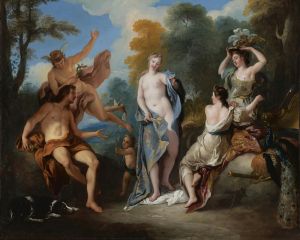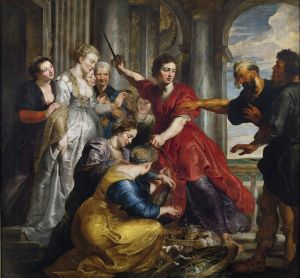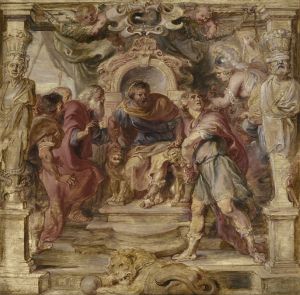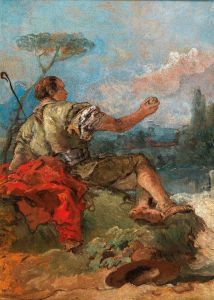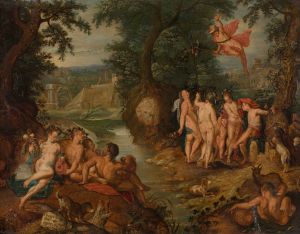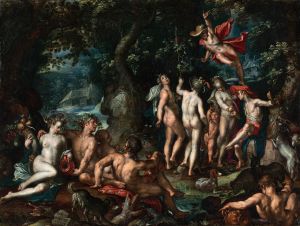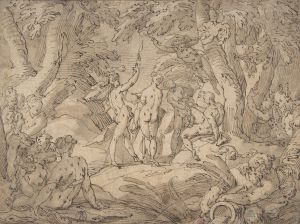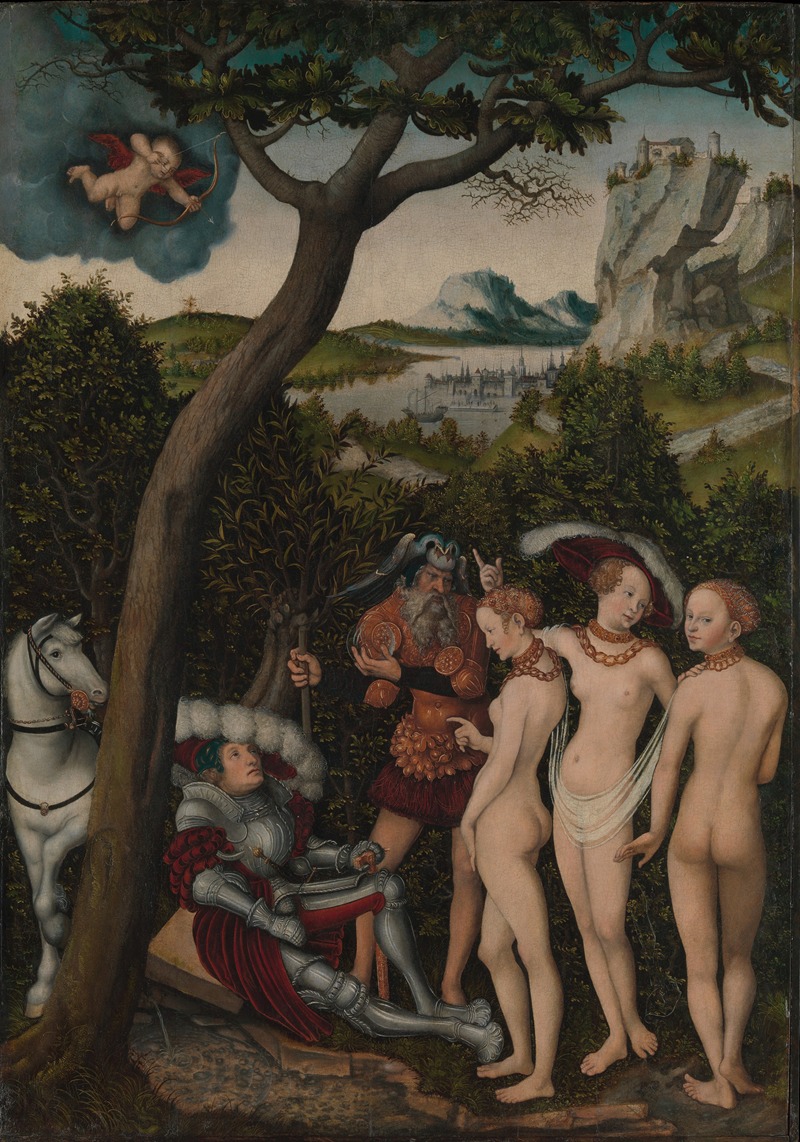
The Judgment of Paris
A hand-painted replica of Lucas Cranach the Elder’s masterpiece The Judgment of Paris, meticulously crafted by professional artists to capture the true essence of the original. Each piece is created with museum-quality canvas and rare mineral pigments, carefully painted by experienced artists with delicate brushstrokes and rich, layered colors to perfectly recreate the texture of the original artwork. Unlike machine-printed reproductions, this hand-painted version brings the painting to life, infused with the artist’s emotions and skill in every stroke. Whether for personal collection or home decoration, it instantly elevates the artistic atmosphere of any space.
"The Judgment of Paris" is a recurring theme in the works of Lucas Cranach the Elder, a prominent German Renaissance painter. Cranach created multiple versions of this mythological subject, which is derived from classical antiquity and recounts the story of Paris, a Trojan prince, who is tasked with deciding which of three goddesses—Hera, Athena, or Aphrodite—is the fairest. The narrative originates from Greek mythology and serves as a prelude to the Trojan War.
Cranach's depictions of "The Judgment of Paris" are characterized by his distinctive Northern Renaissance style, which combines detailed landscapes, elongated figures, and a focus on allegorical and moral themes. The paintings typically portray Paris seated in a pastoral setting, often accompanied by Mercury, the messenger god, who introduces the three goddesses. The goddesses are usually depicted nude or semi-nude, a common artistic convention of the time to emphasize their divine beauty. Each goddess is presented with attributes that symbolize her domain: Hera with regal elements, Athena with armor or a helmet, and Aphrodite often accompanied by Cupid or other symbols of love.
Cranach's treatment of the subject reflects the Renaissance interest in classical mythology and humanist ideals, as well as the artist's skill in blending mythological themes with the tastes and expectations of his patrons. His works often include intricate details in the background, such as lush forests, rolling hills, or distant castles, which situate the mythological scene within a Northern European landscape.
One of Cranach's notable versions of "The Judgment of Paris" is housed in the National Gallery in London. This painting, created around 1528, exemplifies his approach to the subject, with a harmonious composition and a focus on the sensual beauty of the figures. The work also reflects the influence of the Reformation, as Cranach was closely associated with Martin Luther and often incorporated moral or didactic elements into his art.
Cranach's "The Judgment of Paris" remains a significant example of how Renaissance artists reinterpreted classical themes, blending them with contemporary artistic and cultural concerns. His works on this subject continue to be studied for their artistic merit and their reflection of the intellectual currents of the 16th century.





